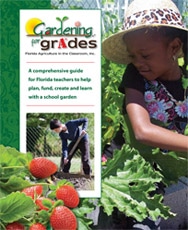Curriculum Connections
Download the activities below from Chapter 3’s Curriculum Connections.
Soil Sort
Young students become soil surgeons, dissecting soil and sorting its components and begin to discover its unique properties.
View LessonIt All Begins With Soil
This lesson is intended for upper elementary, and middle school students. There is an additional lesson for younger students titled Soil Sort. Students examine soil to identify its components and ways that its structure affects plant growth.
View LessonAcid to Alkaline
Students explore pH with an emphasis on soil pH. This activity uses soils and vinegar solutions.
View LessonPlan It, Map It
Using the information provided, students work with their teacher and resources available to plan their garden and employ math skills to do so.
View LessonInch by Inch, Row by Row
Students plan and map garden beds, using information about growth requirements for each plant.
View LessonYo Seeds, Wake Up!
The way we plant seeds is very important. If seeds are planted too deeply, the young plants can use up their food resources before they ever reach light and begin to make their own food. If planted in soil that’s too dry, seeds may not obtain the necessary moisture to germinate. Soaking-wet soil, on the other hand, may prevent seeds from getting oxygen, or may cause them to rot.
View LessonWe’re the Producers!
The purpose of gardening within an educational setting is to utilize the garden as an educational tool. The garden and skills developed by gardening provide concrete examples of theoretical or abstract concepts or processes. This is critical for some students and will result in both greater understanding of difficult concepts and application of those concepts across diverse topics. Before one can garden well, a great deal of science needs to be understood and applied. The understanding of photosynthesis is the first of those concepts. This lesson is designed to make this relatively abstract process concrete for students and, in particular, young students.
View LessonWhat Are We Eating?
A significant reason to engage in gardening in schools is to teach students, and allow them to discover for themselves, how plants grow and what part of the plant we eat. That is the purpose of this activity.
View LessonFeed Me — Nutritional Building Blocks
The difference between human nutrition and plant nutrients is often one of the concepts that students misunderstand. This is proven in documented errors found in standardized test questions. Students hear the term “plant food” and take that term literally, believing that plants eat (as animals do) to obtain nutrients. The intent of this lesson is to clear up that misconception as well as to teach students about the actual nutrients that plants require and the source of those nutrients.
View LessonTurning Over a New Leaf
Students examine variations in leaves and consider how leaf adaptations can help plants survive in different environments.
View Lesson
